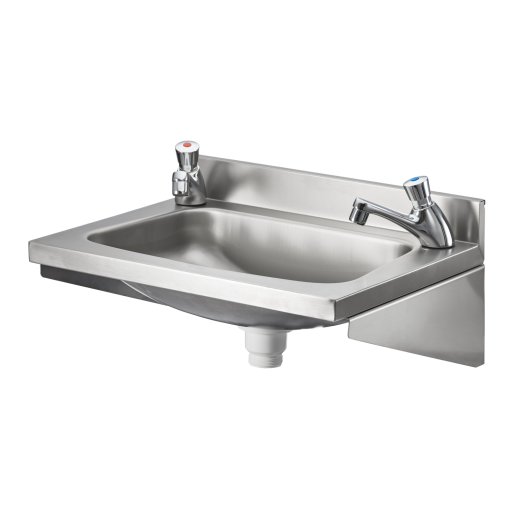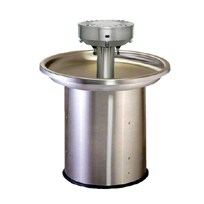A Buyers Guide to Handwash Equipment
Handwash units are essential fixtures for maintaining hygiene in any residential, commercial, or industrial space. Understanding the options available and their specific applications is crucial to ensure the right unit to meet the needs of the space.
In this guide, we cover the different types of handwash units, including handwash basins, inset wash basins, solid surface wash troughs, wash fountains, and wudu wash units, with a detailed look at features, materials, and best practices for installation and maintenance, so you can make an informed decision on the right equipment to fit your purposes.
Handwash Basins
Handwash basins are one of the most commonly installed fixtures in any washroom, suitable for both residential and commercial settings. They come in a variety of shapes, sizes, and materials, ensuring versatility whatever your washroom design.
In order to ensure durability, as well as aesthetic appeal, most handwash basins are made of stainless steel or china. Stainless steel is more suited for high-traffic, industrial, catering, or hospital settings, as it is resistant to corrosion and easiest to clean.
The size of your basin should also be taken into careful consideration. In a compact washroom, smaller, wall-mounted basins may be more suitable, whereas areas where more frequent use is required may benefit from larger models. If considering a wall-mounted unit, ensure you check that the wall can support the weight of the basin.
![]()
![]()
Inset Wash Basins
Inset wash basins are designed to be installed within a countertop, with the basin’s edge flush with the surrounding surface. These are frequently used in residential bathrooms or high-end commercial spaces where aesthetics are a priority.
Blending seamlessly with worktops or vanities, inset wash basins are a popular choice for modern bathrooms. The sink's rim sits just above or flush with the countertop, and they provide an elegant look and are durable.
When choosing an inset basin, ensure adequate space beneath the countertop for plumbing, especially when fitting the waste pipe.
Wash Troughs
Wash troughs are typically found in commercial, industrial, or educational settings, where multiple users need access to handwashing facilities simultaneously. They offer a functional solution for high-traffic areas, such as public restrooms, schools, and factories.
Solid surface wash troughs are becoming increasingly popular in commercial spaces like schools, offices, and restaurants. These long, linear wash units can accommodate multiple users simultaneously, making them a practical and aesthetically appealing choice.
Common materials include stainless steel and solid surface composites. Stainless steel is often preferred due to its durability. Wash troughs can either be wall-mounted or floor-standing. They are designed for multiple users, often featuring several taps along their length.
Wash troughs can require larger drainage systems due to the volume of water being used simultaneously, and installation must consider adequate supply to multiple taps, ensuring balanced water pressure for all users.
![]()
![]()
Wash Fountains
Like wash troughs, wash fountains are highly efficient handwashing units designed to serve several users at once. Typically found in industrial, institutional, or commercial environments, wash fountains save space by allowing people to stand around a single fixture. Wash fountains are space-saving and economical in environments where numerous people need to wash hands quickly, such as in factories or large kitchens.
Wash fountains often have a round or semi-circular design, allowing users to gather around the unit and share water output.
Wudu Wash Units
Wudu wash units are specialised washing stations, designed to allow for the washing of hands, feet, and face in a comfortable manner, usually found in mosques or other prayer facilities.
Wudu wash units are designed for ease of use, featuring seating areas and taps positioned for easy access to both upper and lower body parts. Some units also feature footrests. Typically made from stainless steel or ceramic materials, these units are both functional and hygienic.
![]()
Selecting the Right Handwash Unit
Selecting the right handwash units depends heavily on the intended application, whether it's for residential bathrooms or high-traffic commercial and industrial settings. The key to success is understanding the specific needs of the end-user, from material considerations to water supply and drainage requirements, ensuring the handwash units are durable, functional, and easy to maintain.
-
Posted by Paul Thorn
30th September 2024

 UK's Largest Stockholding
UK's Largest Stockholding Next Day Delivery Available
Next Day Delivery Available UK Mainland Delivery from £15
UK Mainland Delivery from £15 Minimum 1 Year Guarantee
Minimum 1 Year Guarantee



